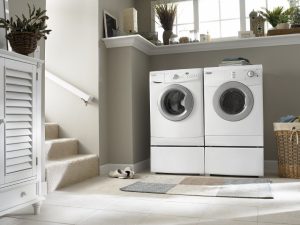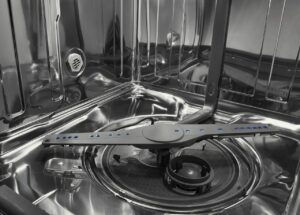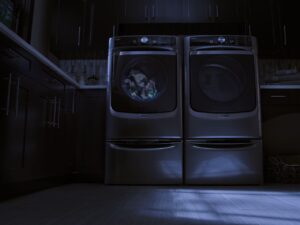Tips to Create An Efficient Laundry Room

The average household in America does 300 loads of laundry each year. This can add up to considerable water and energy usage. Fortunately, there are ways to conserve energy in your laundry room without compromising on cleaning performance.
Look for ENERGY Star Label Appliances:
The first step in creating an efficient laundry room is to look for ENERGY Star label appliances. ENERGY Star promotes the use of energy efficient products, and washers can only have a certified label if they use up to 40 percent less energy and up to 65 percent less water. These appliances can also remove more water from your laundry, so you can save energy when you put them in the dryer.
Adjust the Water Temperature:
Many people have their preferred laundry settings and tend to avoid changing them, but this can be a mistake. You should always adjust the water temperature to suit your laundry load. In most cases, you can wash clothing in cold or warm water and achieve the same results as you would with a hot water temperature. This can save up to 50 percent on your energy costs per load.
If you are concerned about cleaning with cold water, you can use a cold water detergent. You can also treat any oily or ground in stains before washing to ensure the best results.
Try to Only Wash Full Loads:
Most washers use approximately the same energy regardless of the size of the load. So, try to avoid washing partial or small loads. Aim to do two or three full loads each week, rather than a small load every day.
Dry Correct Sized Loads:
The size of load is also important for your dryer. If you overload your dryer, it will take far longer to get everything dry. Additionally, very small loads can also take longer to dry. So, aim to dry the optimum load for your machine. The capacity of dryers is measured in the weight of damp laundry. Once you get an eye for the approximate weight of your optimum load, you will find your dryer works more efficiently.
Change Loads When Your Dryer is Warm:
If you have multiple loads to dry, change loads when your dryer is still warm. This will allow the remaining heat from your first load to start drying the next load. Remember that you can always dry some items on a drying rack or outside to minimize the dryer use.
Invest in Some Dryer Balls:
Dryer balls are relatively inexpensive, but they can more than pay for themselves in energy savings. They will not only help to separate your laundry items to allow the warm air to circulate, but also reduce static. This will eliminate the need for dryer sheets.
You can buy rubber or wool dryer balls. Rubber tends to be more durable, but wool balls can absorb some excess moisture. This will cut down on the dryer time.
Clean Your Lint Filters:
Most dryers and some washers have lint filters, which accumulate lint during each cycle. However, if the lint filter is full, it can compromise safety and efficiency. A clean lint filter will promote air circulation, aiding drying. So, be sure to clean your lint filters after every cycle.
Separate Your Loads:
While it can be tempting to just throw everything into the washer and dryer, this is a very inefficient way to do laundry. Washing heavy items such as towels along with lighter weight clothing can reduce the cleaning potential. It can also increase the drying cycle time.
So, it is a good idea to separate your laundry loads. Try to keep heavier weight items in separate loads from your lighter weight items.
If you’re considering a new washer or dryer, you can explore your options with our online laundry collection. Additionally, our home appliance specialists are available to answer any queries or questions.
- Choosing Between a Plastic and a Stainless Steel Dishwasher Tub
- Steam Dryers: Efficient, Gentle, and Wrinkle-Free Laundry Solution
- Benefits of a Smart Washing Machine
- Beverage Stations: Elevating Your Kitchen with the Latest Trend
- New Ways to Design Your Kitchen in 2024
- Should You Choose a Column Refrigerator?
- The Benefits of an Outdoor Pizza Oven
- Should You Choose a Freestanding or Slide-In Range?
- Understanding Microwave Wattage
- Standard or Pro Ranges: Which One is Best for Your Home?






